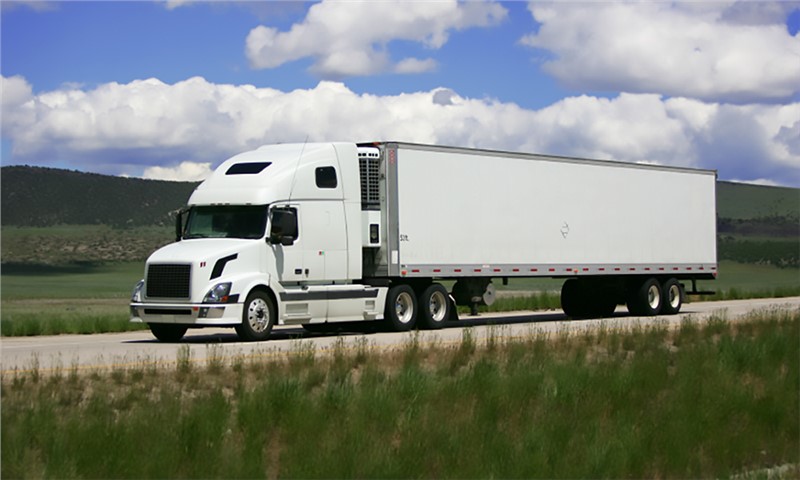Introduction

So, you’re gearing up for a big move—a new adventure awaits! Before you embark on this exciting journey, it’s crucial to understand the intricate dance of the moving process. Long-distance movers, often the unsung heroes of relocation, play a pivotal role in ensuring your belongings make it safely to your new abode. These dedicated professionals invest their time, effort, and expertise to make your move as smooth as possible.
Recognizing the Hard Work of Movers with Gratuities
Moving can be a challenging and stressful experience, but the expertise of a seasoned moving crew can turn the tide in your favor. It’s only fitting to acknowledge the hard work and dedication these movers bring to the table. One of the most tangible ways to express your appreciation is through tips. In the service industry, where a smile and a job well done often go unnoticed, a tip is a powerful gesture that resonates with the hardworking individuals who make your move possible.
Considerations in Determining How Much to Tip Movers
Now that we’ve established the importance of tipping, let’s delve into the considerations that should guide your decision on how much to tip your long-distance movers. The amount you choose to tip can vary based on several factors, and understanding these nuances ensures a fair and gratifying experience for both you and the moving crew.
Understanding Tipping Etiquette for Long Distance Movers
An Overview of Tipping Etiquette in the Moving Industry
Moving can be a whirlwind of emotions and logistics, but one aspect that should not be overlooked is expressing gratitude through tipping. Tipping is not just a financial transaction; it’s a way to recognize the hard work and dedication of your moving crew. In the moving industry, it’s a common practice to show appreciation for a job well done, and your tip can make a significant impact on the morale of the crew.

Tipping as a Sign of Appreciation for Good Service
Think of tipping as a way to say, “Thank you for a job well done!” Your movers are not just transporting boxes; they’re helping you transition to a new chapter of your life. Tipping is a tangible way to acknowledge their efforts and show gratitude for the smooth handling of your precious belongings.
The Distinction Between Local and Long-Distance Moving When It Comes to Tipping
Moving within the neighborhood and embarking on a long-distance journey involve different levels of effort. For local moves, a standard tipping practice applies, but when it comes to long-distance movers, the complexity of the task often warrants a more generous tip. Understanding this distinction ensures you appropriately recognize the unique challenges of a long-distance move.
Factors Influencing Tipping Amounts
The Complexity of the Move
Moving is not a one-size-fits-all endeavor, and the tipping amount should reflect the intricacy of the task at hand. Consider the following factors that can influence your decision:
Size of the Household
The more items you have, the more effort it takes to move them. Larger households typically require additional time and manpower, making a higher tip amount a fair reflection of the work involved.
Distance of the Relocation
Long-distance moves demand more time, coordination, and effort. Acknowledge the dedication of your movers by factoring in the distance traveled when determining the appropriate tip.
The Quality of Service Provided
Care of Belongings
A meticulous approach to handling your belongings deserves recognition. If your movers demonstrate exceptional care, a higher tip is not only appropriate but also encourages such professionalism in the industry.
Professionalism and Punctuality
Timeliness and professionalism are valuable attributes in the moving industry. If your movers display these qualities, it’s a good indicator of a job well done and warrants a commendable tip.
Additional Services Rendered
Packing and Unpacking
If your moving crew goes the extra mile by assisting with packing and unpacking, consider this when determining your tip. Such additional services showcase a commitment to customer satisfaction.
Disassembling and Assembling Furniture
The extra effort put into disassembling and reassembling furniture contributes to a smoother move. Recognize this by factoring it into your tipping decision.
Customary Tipping Rates in the Industry
While there is no strict rule on how much to tip, understanding the customary rates in the industry provides a helpful benchmark. Typically, a percentage of the total moving cost or a flat rate per mover is considered standard.
Remember, your tip is not just a financial transaction; it’s a token of appreciation for a job well done. By considering these factors, you can ensure that your movers feel valued for their hard work throughout your long-distance move.
Standard Tipping Recommendations for Long Distance Moves
When it comes to tipping long-distance movers, it’s essential to have a baseline understanding of what’s considered customary. As a moving consultant, I recommend a standard tip that reflects the hard work and dedication of your moving crew. On average, tipping 10% to 20% of the total moving cost is a good starting point. This ensures that your movers feel appreciated for their efforts in making your long-distance move a success.
Per Mover/Per Day Tipping Approach
A practical approach to tipping is to consider the individual effort put forth by each mover. In this scenario, tipping per mover or per day can be a fair method. A range of $20 to $50 per mover, per day, is a thoughtful way to acknowledge their hard work. Keep in mind that the number of crew members may vary, so adjust accordingly based on the size of the team.
Percentage of the Total Moving Cost

Another widely accepted method is to calculate your tip as a percentage of the total moving cost. This approach provides a clear formula for determining an appropriate tip amount. As mentioned earlier, a range of 10% to 20% aligns with industry standards and ensures that your tip reflects the scope and complexity of your long-distance move.
Adjusting Tips Based on the Duration of the Move
The duration of your move can also influence the tip amount. If your long-distance move spans several days, consider adjusting your tip to account for the extended commitment of the moving crew. Adding a little extra for each day shows your appreciation for their sustained effort and dedication.
Case Examples: How Much to Tip in Various Scenarios
Short Distance vs. Cross-Country Move Tipping
Short Distance
For shorter moves within the same city or nearby areas, a tip on the lower end of the recommended scale, around 10%, may be suitable. These moves typically require less time and effort, reflecting in a slightly lower tip.
Cross-Country Move
Long-distance moves, especially cross-country relocations, demand a higher level of dedication and effort. In such cases, leaning towards the higher end of the tipping scale, around 15% to 20%, is a fair acknowledgment of the challenges faced by the moving crew.
Tipping for Complex Tasks or Exceptional Service
If your move involves complex tasks such as navigating stairs, handling exceptionally heavy furniture, or addressing specific requests, it’s advisable to tip on the higher side of the recommended range.
Recognize the extra effort and care demonstrated by the movers in these situations with a more generous tip.
Situations When a Lower Tip or No Tip Might Be Acceptable
While tipping is a common practice, there may be instances where a lower tip or no tip is acceptable. If the service provided falls below expectations, it’s crucial to communicate your concerns with the moving company. However, keep in mind that unforeseen circumstances, such as weather-related challenges, should be considered separately from the crew’s performance.
Remember, these are general guidelines, and the most important factor is to tip in a way that reflects your appreciation for the hard work and dedication of your long-distance movers. Adjust these recommendations based on your unique circumstances and the exceptional service you receive.
Methods of Presenting Tips to Movers
Collectively vs. Individually: Which Is Better?
When it comes to presenting tips to your long-distance moving crew, you have the option of either giving tips collectively or individually. Both methods have their merits, and the choice often depends on your preferences and the dynamics of your move.
Pros of Collective Tipping:
Simplicity: Giving a collective tip is straightforward and can be more convenient, especially if you’re working with a larger crew.
Equal Distribution: It ensures that each member of the team receives an equal share of the appreciation, fostering a sense of camaraderie.
Pros of Individual Tipping:
Personalization: Providing individual tips allows you to express gratitude directly to each mover, acknowledging their specific contributions.
Recognition: It ensures that exceptional efforts don’t go unnoticed, as you can tailor tips based on individual performance.
Consider the size of your crew and the level of personalization you desire when deciding between collective or individual tipping.
Cash Tips Versus Other Forms of Gratuity

Cash Tips
Cash is the traditional and most direct form of tipping. It provides instant gratification to the movers, and they can use it as they see fit. When opting for cash tips, ensure you have enough in small denominations for easy distribution.
Other Forms of Gratuity
In today’s digital age, there are alternative ways to show appreciation. Consider providing gratuities in the form of gift cards, prepaid debit cards, or digital payment methods. This method can be more convenient for both you and the movers, especially in situations where carrying cash may not be ideal.
Appropriate Timing for Giving Tips
Timing is crucial when presenting tips to your long-distance movers. The best practice is to offer tips at the completion of the move, once all your belongings are safely in your new home. This ensures that the tips are a culmination of the entire moving experience, reflecting your overall satisfaction with the service.
Additional Ways to Show Appreciation
Providing Refreshments and Meals
A well-fed and hydrated moving crew is a happy and energetic one. Consider offering refreshments and meals to your movers, especially during a full-day move. This simple gesture goes a long way in demonstrating your appreciation for their hard work.
Positive Reviews and Referrals
Share your positive experience with others. Leave reviews on the moving company’s website or popular review platforms. Additionally, if you were particularly impressed, consider referring the moving company to friends or family who might be planning a move. This indirect form of appreciation can contribute to the success of the moving company.
Letters of Commendation
Take a moment to express your gratitude in writing. A heartfelt letter of commendation, outlining the exceptional service you received, can have a lasting impact. You can share these letters directly with the moving company, ensuring that the movers receive the recognition they deserve for a job well done.
Incorporating these additional ways to show appreciation, along with thoughtful tipping methods, ensures that your long-distance movers feel valued and acknowledged for their hard work throughout your move.
Tipping Strategies on a Budget
Balancing Recognition with Financial Constraints
As a moving consultant, I understand that budgetary constraints may influence your tipping decisions. However, even with financial limitations, there are ways to express your appreciation without breaking the bank.
Handwritten Thank-You Notes
A heartfelt note goes a long way. Take the time to write a personalized thank-you note expressing your gratitude for their hard work. This non-monetary gesture can be just as meaningful as a tip.
Provide Refreshments
Offering water, snacks, or a simple lunch can be a budget-friendly yet thoughtful way to show your appreciation. A well-fed crew is a happy and motivated one.
Leave a Positive Review
Share your positive experience online. Leaving a glowing review on the moving company’s website or popular review platforms is a valuable and cost-effective way to recognize their efforts.
Non-Monetary Ways to Express Gratitude
While tips are a common form of appreciation, there are several non-monetary ways to express gratitude that can be just as impactful.
Offer a Helping Hand
Assist the crew with small tasks. Whether it’s holding doors open, providing clear directions, or helping with light items, your active involvement can be a tangible display of gratitude.
Clear Communication
Clear and positive communication throughout the move can make a significant difference. Express your satisfaction verbally, highlighting specific aspects of the service you found exceptional.
Smiles and Words of Encouragement
A smile goes a long way. Express your gratitude with a friendly demeanor and words of encouragement. A positive atmosphere can uplift the spirits of the moving crew.
FAQs
- What is the Standard Tip for Long-Distance Movers?
The standard tip for long-distance movers typically falls in the range of 10% to 20% of the total moving cost. This percentage takes into account the complexity of the move, the quality of service provided, and the dedication of the moving crew.
- Should I Tip Movers in Cash?
Yes, tipping movers in cash is a common and appreciated practice. Cash provides an immediate and tangible form of gratitude for the moving crew. Ensure you have enough small denominations for easy distribution.
- What If the Moving Service Was Subpar; Do I Still Need to Tip?
Tipping is often tied to the level of service received. If you’re dissatisfied with the service, it’s essential to communicate your concerns with the moving company. However, consider tipping a nominal amount to acknowledge the effort put forth, even if the service was subpar.
- Is a Tip Included in the Moving Company’s Fees?
In most cases, a tip is not included in the moving company’s fees. Tipping is a separate expression of appreciation for the movers’ hard work and dedication. It’s advisable to inquire with the moving
company to confirm their tipping policy.
- How Do I Know If My Tip Is Generous Enough?
A good rule of thumb is to aim for a tip that falls within the standard range of 10% to 20% of the total moving cost. Additionally, consider the factors discussed earlier, such as the complexity of the move and the quality of service, when determining the generosity of your tip.
- Can I Tip Long Distance Movers with Something Other Than Money?
Absolutely! While cash is traditional, there are alternative ways to show appreciation. Providing refreshments, meals, or writing a heartfelt thank-you note are thoughtful non-monetary gestures that movers often appreciate.
- Should I Give the Tip Directly to the Individual Movers or the Supervisor?
It’s customary to give tips directly to the individual movers. However, if you prefer, you can give the tip to the crew leader or supervisor, trusting them to distribute it among the team. Directly handing tips to individuals adds a personal touch.
- If I’m Moving on a Budget, How Can I Still Show Appreciation to My Movers?
Even if you’re on a budget, there are ways to express gratitude. Consider offering refreshments, providing a positive review online, or assisting with small tasks during the move. These gestures showcase appreciation without straining your budget.
Conclusion
The Key Points on How Much to Tip Long Distance Movers
In conclusion, tipping long-distance movers is a thoughtful way to recognize their hard work. The standard tip ranges from 10% to 20% of the total moving cost, but it’s crucial to consider the specific circumstances of your move and the service received.
The Importance of Weighing the Service Received Against Standard Tipping Practices
Always weigh the service you receive against standard tipping practices. Communicate openly with the moving company if needed, and remember that even small gestures of appreciation, whether monetary or not, go a long way in recognizing the efforts of your moving crew. Safe moving!





